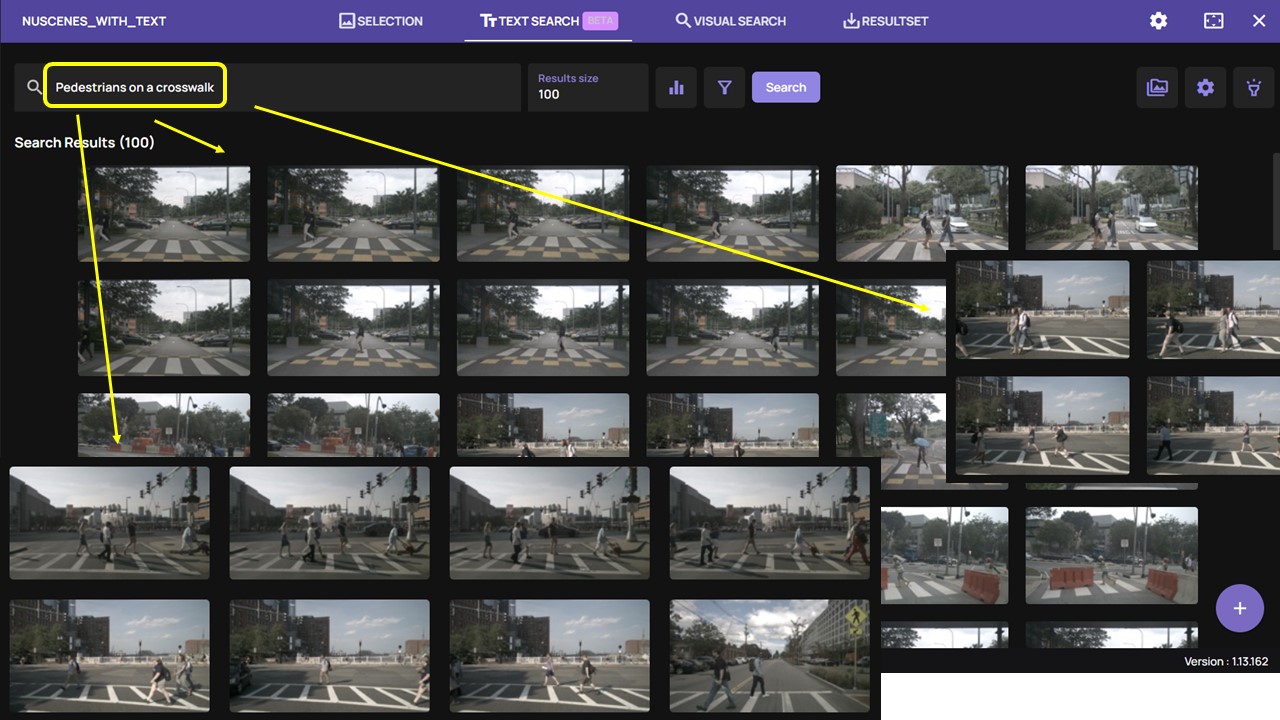In the fast-evolving field of computer vision, development cycles heavily rely on extensive visual datasets. These datasets, comprising diverse images and videos from various sources, are curated to form training and test sets essential for developing, training, and testing deep learning (DL) models.
But how does this curation process work? How do data scientists sift through massive raw datasets to find high-quality, diverse subsets for training and testing?
The Challenge of Curating Visual Datasets
Data scientists face a significant challenge when searching through massive visual and video datasets. This process is often painstakingly long, labor-intensive, and tedious.
The Manual Approach: Time-Consuming and Inefficient
The most basic method involves manually searching through thousands—or even tens of thousands—of images or hours of video. This approach requires a significant time investment, with no guarantee of finding the relevant images or frames needed.
The Semi-Automatic Approach: Limited and Rigid
Alternatively, data scientists can take a semi-automatic approach, writing scripts that use basic features like colors, edges, and shapes. While this method might work for static and homogenous data, it struggles with the large variations in image size, resolution, lighting conditions, scenes, and occlusions typical of modern applications.
Annotation-Based Search: Expensive and Error-Prone
Another option is to annotate all raw data and apply queries on the metadata. However, this approach is costly, time-consuming, and prone to inaccuracies. Furthermore, reusing data for new projects often requires re-annotation with new objects, tags, or masks, adding to the inefficiency.
The Need for Efficient Image Searching in Computer Vision
Despite these challenges, searching through massive datasets for relevant images remains a standard practice. High-quality, clean data is crucial for effective model training and development. However, traditional methods of data curation are increasingly becoming too costly, time-consuming, or both.
Introducing Data Explorer’s Advanced Text-to-Image Search
A Game-Changer for Visual Data Curation
Data Explorer is a powerful platform designed to streamline the process of curating and cleaning visual data, ensuring high-quality datasets at every stage of the development cycle. One of its standout features is the advanced text-to-image search, which allows users to quickly and easily search through images and videos without the need for annotations.
How Text-to-Image Search Works
Text-to-image search leverages natural language processing (NLP) to process user queries and deliver relevant images or frames within seconds. This feature is particularly beneficial when working with very large datasets, where traditional search methods would be inefficient.
Here’s how it works:
- Create and Connect Your Account: Open a Data Explorer account and connect it to your data. Importantly, your data will not be moved or copied at any point.
- Enter Your Search Query: Type your search query into the search bar. The query can be as simple as a single word.
- Receive Instant Results: The platform processes the text query and quickly provides the most relevant images or frames.
- Refine Your Search: This process can be repeated and refined as many times as needed to locate all required images.
- Optional Patch Search: After applying the text-based search, users can also run a patch search to further enhance the results.
Combining Text-to-Image and Image-Based Search
For even more precise results, Data Explorer allows you to combine text-to-image search with image-based search. This powerful combination ensures that you can find the most relevant subset of images or frames from your raw data within seconds, regardless of dataset size.
Save Time and Enhance Efficiency with Data Explorer
Data Explorer significantly reduces the time spent on curating visual data, making it a vital tool for data scientists working on computer vision projects. With its intuitive interface and advanced search capabilities, the platform streamlines the creation of high-quality training and test sets, enabling faster and more efficient model development.
Get Started with Data Explorer Today
Ready to revolutionize your visual data curation process? Data Explorer offers a simple yet powerful interface for running text-to-image searches on raw data, saving you hours of manual labor and ensuring that you have access to the most relevant subsets of images or video frames.
To learn more, visit us at akridata.ai or click here to register for a free account today.



No Responses